 Years ago I used to waste a lot of money on fancy clothes. The menswear salesman would often stare at the price tag and then look up and make a better offer, saying, ‘Ok, this is my best price…’ I wondered if he suffered from bad memory, because every few seconds, he would look at the price tag of each garment, even though all garments on a particular rack were advertised at the same price. Many years later I found out that the price-tag contained vital pricing information hidden in the form of a code that enabled the salesman to calculate what type of discount he could afford to give me while maintaining his commission. In those early days, the codes were crude and obvious to anyone who tried hard enough to crack them. In latter years, the clue was embedded into the price. A suit that ended in $49 such as $749 was vastly different in profitability from the suit that ended in $55 such as $955. Those last two digits told the salesman how much he could deduct. To this day, large supermarkets communicate with their staff members in this way.
Years ago I used to waste a lot of money on fancy clothes. The menswear salesman would often stare at the price tag and then look up and make a better offer, saying, ‘Ok, this is my best price…’ I wondered if he suffered from bad memory, because every few seconds, he would look at the price tag of each garment, even though all garments on a particular rack were advertised at the same price. Many years later I found out that the price-tag contained vital pricing information hidden in the form of a code that enabled the salesman to calculate what type of discount he could afford to give me while maintaining his commission. In those early days, the codes were crude and obvious to anyone who tried hard enough to crack them. In latter years, the clue was embedded into the price. A suit that ended in $49 such as $749 was vastly different in profitability from the suit that ended in $55 such as $955. Those last two digits told the salesman how much he could deduct. To this day, large supermarkets communicate with their staff members in this way.
In view of the modern scanners and hand-held technology devices that store personnel could use, we can almost assume that such codes are no longer necessary (although I know of two large supermarkets that still do this), unless this is the new top-secret underground clever method of sending out nuclear codes in full view. And this brings me to ask why prices of grocery items end in 99 cents, while large ticket items end in 99 dollars. Browse through the next catalogue and you will see all manner of items that totally disregard the fact that in many countries including Australia, the one-cent coin has been taken out of circulation. The two-cent coin was also scrapped. So what’s the joke? Do product managers and merchandisers really believe that $4.99 is cheaper than $5.00?
It’s impossible to purchase such products because all cash-registers automatically round-up or round-down. So why the insult?
I was at the local post-office when a woman raised her voice in utter frustration. In the previous month, she was trying to pay her telephone bill. It came to something like $79.96. The computer would only accept $79.95. And now she was in possession of a letter of demand, asking for one cent. The post clerk could not process it because the computer would not take it. She had tried to call the phone company, but was unable to find a help-desk agent who understood her dilemma.
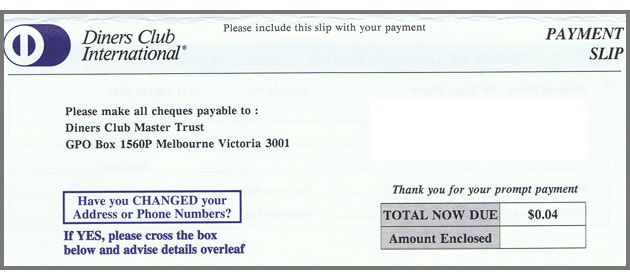 I had a similar incident with American Express and Diners. It was laughable that they would send me a bill for one cent or four cents. Impossible to pay it! Yet, I learned something from that experience. When Optus annoyed me, I engineered this error on purpose. I used to work at IBM whose carrier of choice was Optus. My corporate mobile phone was therefore an Optus account. When I left IBM, the company allowed me to take my phone number with me. So I filled in all the forms and transferred the account into my name. I was now an Optus customer. Over the next three months, I received three invoices and paid them each time.
I had a similar incident with American Express and Diners. It was laughable that they would send me a bill for one cent or four cents. Impossible to pay it! Yet, I learned something from that experience. When Optus annoyed me, I engineered this error on purpose. I used to work at IBM whose carrier of choice was Optus. My corporate mobile phone was therefore an Optus account. When I left IBM, the company allowed me to take my phone number with me. So I filled in all the forms and transferred the account into my name. I was now an Optus customer. Over the next three months, I received three invoices and paid them each time.
Then, one day, a threatening knock on the door from a collections agent amazed me. ‘Are you Jonar Nader?’ he asked, poised to issue me with a legal document and a letter-of-demand. He said that Optus has been trying to find me, and that I owe them money, and that I will soon have a black mark against my credit rating. Too precious for words. How many Jonar Nader’s could exist on Optus’ computer? How was it possible that they could not find me? They knew who I was and where I was and had sent me three invoices which were paid. It transpired that just after I left the company, they had sent a bill to IBM who paid the bill except for the $12.96 which IBM calculated that I had incurred during the final three days of the billing cycle, which fell on the days that I was no longer an employee. IBM had informed Optus that they should send the bill to me. Optus knew that I was the new owner of that number.
All that Optus had to do was to send the bill to me, but they did not stop to think to check to look me up on their system. Someone from accounts had noted that IBM under-paid, and that the person responsible is a Mr Jonar Nader. So they hired a debt collector to find Mr Jonar Nader, not realising that all the contracts were in place, and the new owner of the phone number is the same Mr Nader. Unbelivable. That dip-stick did not even think to phone the number. They just went out in search of the allegedly recalcitrant user who tried to defraud Optus out of $12.96. Talk about a company where the left-hand knows not what the right-hand is doing. Instead, they waited for three months and became incensed that I had not paid a bill; a bill that was never sent to me. So after they tracked me down (goodness knows how much they had paid the collection agency to travel all this way to my home) I paid the bill, minus one cent. $12.95 was just not good enough for them. So for the following five months, I would receive a bill for one cent.
For these types of reasons, my eyes are drawn to the impossible amount. Here’s a photo of a butcher in Carlingford NSW (Australia) who seems to think that the people still use the one-cent. Why doesn’t the butcher charge $6.00 and slap on an extra morsel of minced meat, and we can call it a day. Every single item in this store ends in 99 cents. Would sales plummet if prices were displayed to the nearest dollar? Or would it be financially inadvisable to go down to 95 or 90 cents?
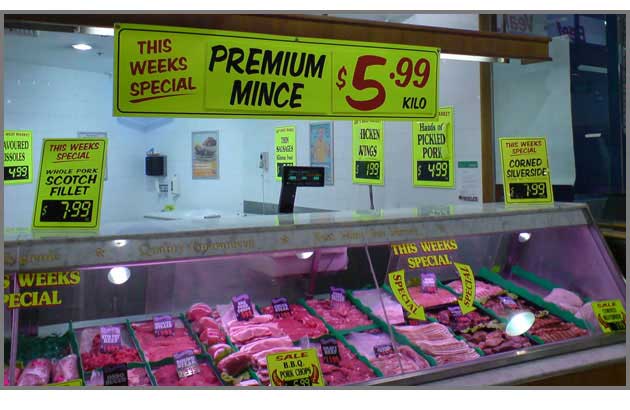 THE HISTORY OF THE TRADITION
THE HISTORY OF THE TRADITION
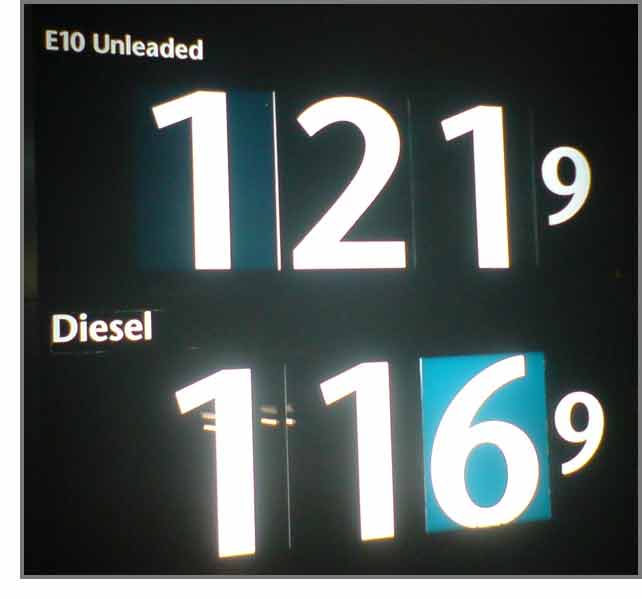 In How to Lose Friends and Infuriate People, I note that almost everyone will say that this tactic is used because such amounts appear to be cheaper. Yes, they might appear cheaper, but who are we kidding? Regardless of what might appear cheaper, do you know the history behind this tradition? Years ago, one cent was worth saving. If you bought a product for $2.99, you would wait around for the change, because you could buy something worthwhile with one cent. Shopkeepers priced products this way so that shoppers would insist on the change. To receive their change, the sales assistant who took the money had to register the sale on the cash register, hence, they were forced to open the cash drawer. By so doing, a bell rang. To this day, cash registers sound a bell when they are opened. This bell warned the owner of the store that the junior sales assistant was opening the drawer, and that deterred the junior from tampering with the cash (aware that the boss might be watching and the sale is now recorded/registered). By this simple pricing policy, the shopkeeper achieved three things. First, each sale was registered, making it easier to account for stock movement. Second, by waiting for change, the customer forced the junior to put the money in the drawer. Third, when the cash draw was opened, it rang the bell, enabling the owner to keep an eye on the money. As you can see, the history behind this pricing policy had nothing to do with making the product seem cheaper. Even if it were, one cent in those days was something useful. These days, the tradition (or should I say habit or mindless trick) is still enacted, without any sound basis. Take a look at petrol prices. These are usually sold to one-tenth of a cent. Ever since I can remember, petrol prices have been xx.9 cents. And now they are xxx.9 cents. If they expect us to believe that petrol prices change daily (that market practice is in itself ludicrous), then why is it so miraculous that every day, it ends in point-nine of a cent? What do they take us for? When will they stop that insult?
In How to Lose Friends and Infuriate People, I note that almost everyone will say that this tactic is used because such amounts appear to be cheaper. Yes, they might appear cheaper, but who are we kidding? Regardless of what might appear cheaper, do you know the history behind this tradition? Years ago, one cent was worth saving. If you bought a product for $2.99, you would wait around for the change, because you could buy something worthwhile with one cent. Shopkeepers priced products this way so that shoppers would insist on the change. To receive their change, the sales assistant who took the money had to register the sale on the cash register, hence, they were forced to open the cash drawer. By so doing, a bell rang. To this day, cash registers sound a bell when they are opened. This bell warned the owner of the store that the junior sales assistant was opening the drawer, and that deterred the junior from tampering with the cash (aware that the boss might be watching and the sale is now recorded/registered). By this simple pricing policy, the shopkeeper achieved three things. First, each sale was registered, making it easier to account for stock movement. Second, by waiting for change, the customer forced the junior to put the money in the drawer. Third, when the cash draw was opened, it rang the bell, enabling the owner to keep an eye on the money. As you can see, the history behind this pricing policy had nothing to do with making the product seem cheaper. Even if it were, one cent in those days was something useful. These days, the tradition (or should I say habit or mindless trick) is still enacted, without any sound basis. Take a look at petrol prices. These are usually sold to one-tenth of a cent. Ever since I can remember, petrol prices have been xx.9 cents. And now they are xxx.9 cents. If they expect us to believe that petrol prices change daily (that market practice is in itself ludicrous), then why is it so miraculous that every day, it ends in point-nine of a cent? What do they take us for? When will they stop that insult?
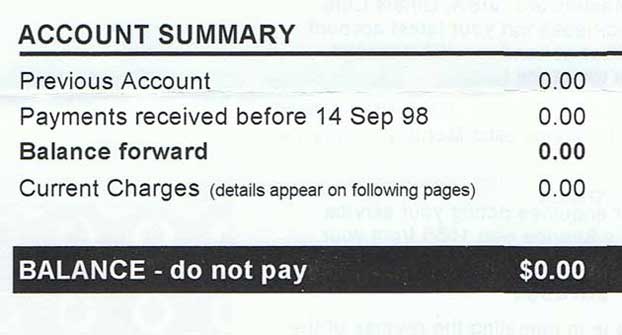
By the way, all these corporations who keep telling us to save paper, and who write silly statements at the bottom of their email sign-offs about considering the environment before we print anything, ought to look at what’s going out of their mailing house. Why do they send letters in fixed space fonts where page two has nothing more than a ‘Yours faithfully’ followed by a scribble and a title (they rarely show their name these days, or sign it as P. Grimsby. Is that a male or female. I don’t care either way, except that, when I call them, the receptionist asks me, and I do not know what to say. What’s wrong with double-sided printing? Can’t they re-format the margins and edit the page so that it fits on one page, especially when the second page is of no use? Never mind the trees. Think about the fuel. Postal trucks heaven laden with a million letters would use considerably less fuel if each two-page letter or bill were reduced to one. Carting so much paper to the printing house and then to the post office puts a lot of pollution in the environment. Not to mention the waste of money.
And with all the computer technology under the sun, and their endless clauses and policies, why can’t companies tell customers that if a monthly invoice comes to five dollars or fewer, an invoice will not be sent. And most definitely, if an invoice comes to a zero balance, no further invoices will be sent until that changes. Here’s a supplier who, for the past several months has spent 55 cents on a stamp to tell me that they owe me thirty cents. For how long will this continue?
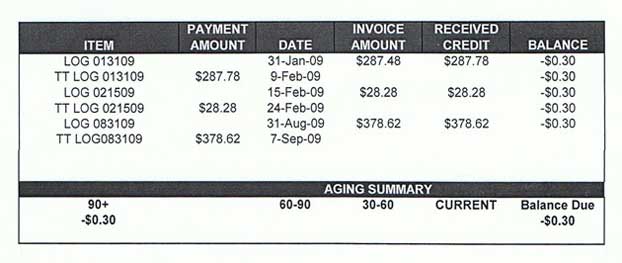
Someone told me that airlines save millions by removing one olive from the quota for each business-class passenger. No doubt someone received a bonus for working that out. For simpletons, the trivial seems to be more exciting than the bleeding obvious.



Comments are closed.